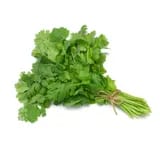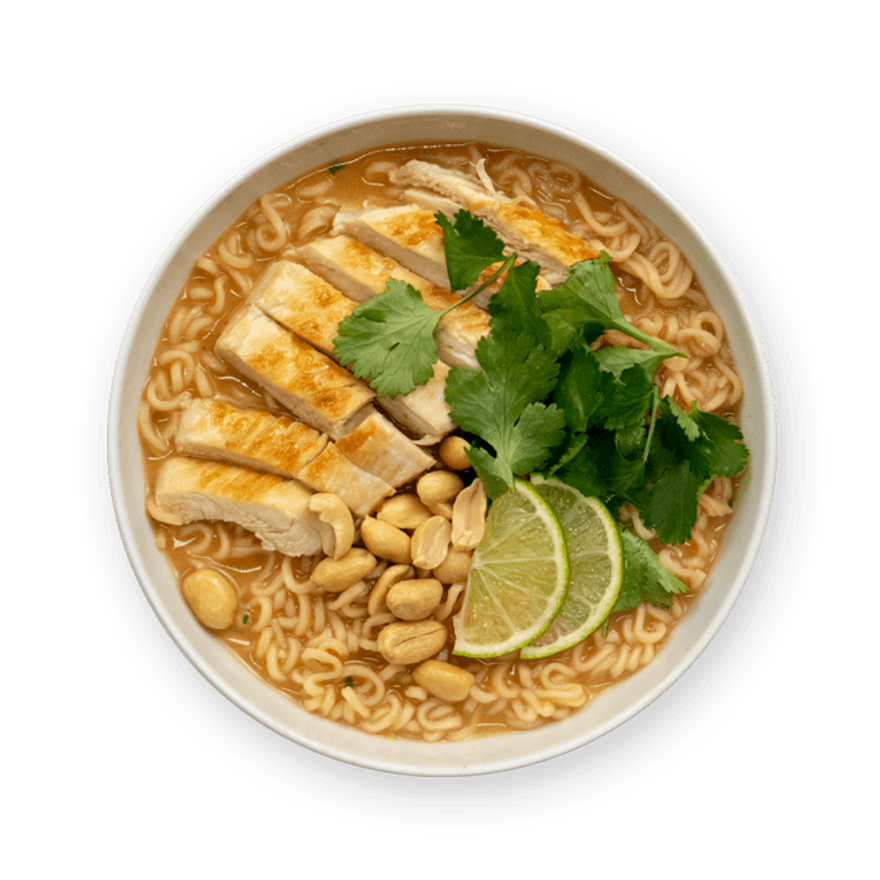Chicken Peanut Ramen Soup
404 reviewsThe sweetness of peanut butter and the heat of sriracha, brought together in a bowl of hot ramen. Delightful!

Ingredients
Utensils
Stovetop, Frying pan, Pot (small)
recipe

Step 1
Add a drizzle of olive oil to a pan and cook the chicken on a high heat for 4-5 min on each side. Set aside.

Step 2
In the meantime, heat 1.5 cups of water per person in a large pot. Bring to a boil, and add the instant noodles. Cook for 2 minutes.




Step 3
Prepare the sauce. In a bowl, combine : the soy sauce, peanut butter, grated ginger, hot sauce and optionally, the ramen seasoning packet.
Step 4
Cut the chicken into strips.
Step 5
Serve the noodles and broth in a bowl, add the sauce and mix well.



Step 6
Add the chicken, crushed peanuts, lime and coriander. Serve and enjoy!
Personal notes
Add your own flavor!
Nutrition facts
Average estimated amount for one serving
| Energy | 591 cal. |
| Fat | 13 g |
| Carbohydrates | 64 g |
| Protein | 49 g |
| Fiber | 6 g |
Values are based on an average estimate for one serving. All nutrition information presented on Jow is intended for informational purposes only. If you have any concerns or questions about your health, please consult with a health-care professional.
On average, one serving of the recipe "Chicken Peanut Ramen Soup" contains 591 Energy, 13 g of Fat, 64 g of Carbohydrates, 49 g of Protein, 6 g of Fiber.
Price per portion
| € | Nos recettes à -2 € par portion |
| €€ | Nos recettes entre 2 € et 4 € par portion |
| €€€ | Nos recettes à +4 € par portion |
Please note, the price above is dependent on your grocer and the available products in the grocery store you chose.
Scores


A Nutri-score
The Nutri-score is an indicator intended for understanding nutritional information. Recipes or products are classified from A to E according to their food composition to promote (fiber, proteins, fruits, vegetables, legumes, etc.) and foods to limit (energy, saturated fatty acids, sugars, salt, etc.).
C Green-score
The Green-score is an indicator representing the environmental impact of food products. The recipes or products are classified from A+ to F. It takes into account several factors on the pollution of air, water, oceans, soil, as well as the impacts on the biosphere. These impacts are studied throughout the product life cycle.
Retrieving reviews...


